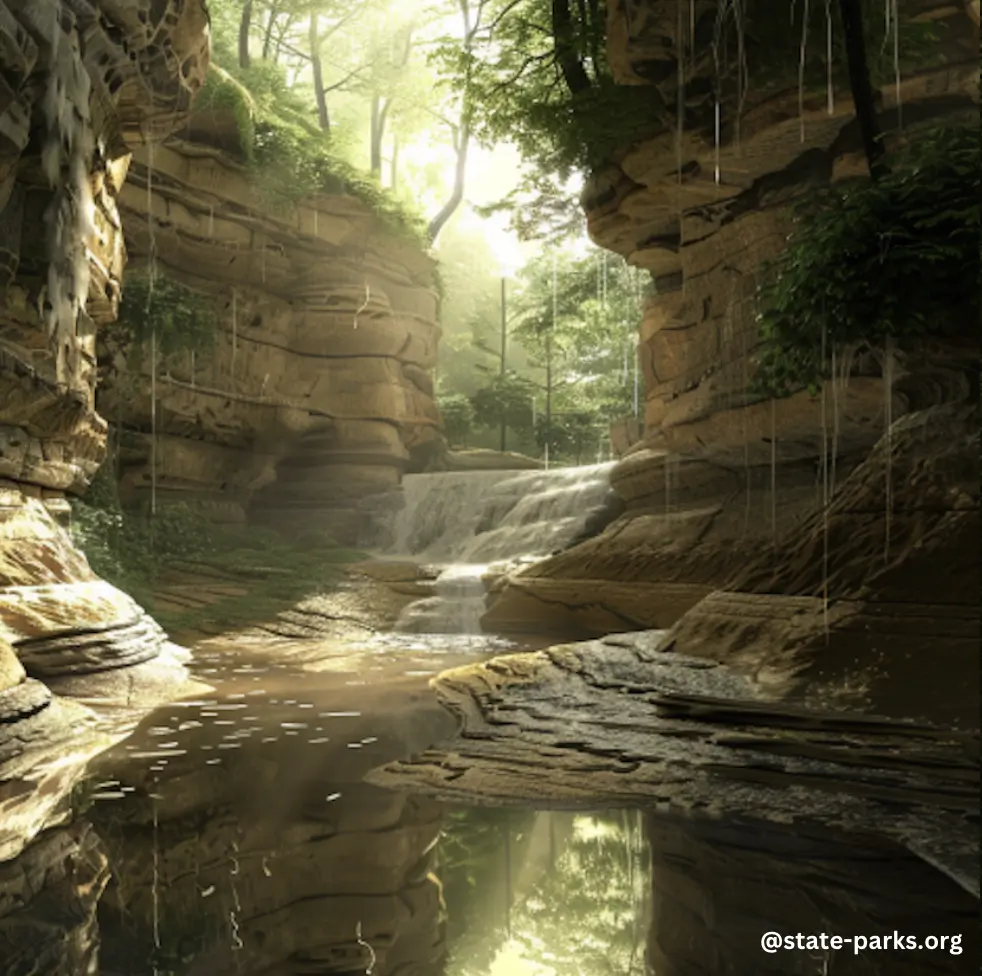Starved Rock State Park, located in Illinois, is a natural wonder that boasts a rich and diverse array of plant life. From towering trees to delicate wildflowers, the park’s landscape is a tapestry of vibrant colors and textures, captivating visitors with its natural beauty. In this blog post, we’ll delve into the fascinating world of Starved Rock State Park Plants, exploring their unique characteristics, habitats, and the role they play in the park’s ecosystem.
The Coniferous and Deciduous Forests of Starved Rock State Park
Starved Rock State Park is home to a mix of coniferous and deciduous forests, each with its own distinct plant communities. The coniferous forests, dominated by towering pine and cedar trees, provide a serene and tranquil atmosphere, while the deciduous forests, with their seasonal changes, offer a dynamic and ever-evolving landscape.
Coniferous Forest Plants
- Eastern White Pine (Pinus strobus): A majestic tree that can reach heights of over 100 feet, the Eastern White Pine is a prominent feature of the park’s coniferous forests.
- Eastern Red Cedar (Juniperus virginiana): This evergreen tree, with its distinctive reddish-brown bark and scale-like leaves, is another common sight in the park’s coniferous areas.
- Balsam Fir (Abies balsamea): A fragrant and dense-needled conifer, the Balsam Fir thrives in the cool, moist environments of Starved Rock State Park.
Deciduous Forest Plants
- Sugar Maple (Acer saccharum): The iconic Sugar Maple, known for its vibrant fall foliage, is a dominant tree species in the park’s deciduous forests.
- White Oak (Quercus alba): This stately oak tree, with its distinctive lobed leaves and acorns, is a common sight in the park’s deciduous woodlands.
- American Beech (Fagus grandifolia): The smooth, gray bark and distinctive pointed leaves of the American Beech make it a recognizable feature of Starved Rock’s deciduous forests.
Wildflowers and Ferns of Starved Rock State Park

In addition to the towering trees, Starved Rock State Park is home to a diverse array of wildflowers and ferns, each with its own unique charm and ecological significance.
Wildflowers
- Columbine (Aquilegia canadensis): This delicate, bell-shaped flower, with its distinctive spurred petals, is a common sight in the park’s canyons and along the trails.
- Tall Bellflower (Campanula americana): The tall, slender stems and purple, bell-shaped flowers of the Tall Bellflower add a touch of elegance to the park’s landscape.
- Jewelweed (Impatiens capensis): Also known as Touch-Me-Not, this vibrant orange flower is a favorite among hummingbirds and can be found in moist, shaded areas of the park.
- Virginia Bluebells (Mertensia virginica): The delicate, blue-purple flowers of the Virginia Bluebells are a sure sign of spring in Starved Rock State Park.
- Trillium (Trillium spp.): These striking, three-petaled flowers, in shades of white, pink, and purple, are a beloved sight in the park’s forests.
Ferns
- Maidenhair Fern (Adiantum pedatum): The delicate, lacy fronds of the Maidenhair Fern thrive in the cool, moist environments of Starved Rock’s canyons.
- Ostrich Fern (Matteuccia struthiopteris): With its large, feathery fronds, the Ostrich Fern is a prominent feature in the park’s wetland areas.
- Sensitive Fern (Onoclea sensibilis): As its name suggests, the Sensitive Fern is quick to wilt in response to changes in its environment, making it a fascinating plant to observe.
Poison Ivy and Other Unique Plants
While the majority of Starved Rock State Park’s plant life is a delight to encounter, visitors should be aware of the presence of Poison Ivy, a plant that can cause an allergic reaction in humans.
Poison Ivy
- Poison Ivy (Toxicodendron radicans): This plant, with its distinctive three-leaflet structure, can be found throughout the park, often growing as a vine or shrub. Visitors should learn to identify it and take precautions to avoid contact.
Mushrooms, Lichens, Mosses, and Liverworts
In addition to the more prominent plant species, Starved Rock State Park is home to a diverse array of fungi, lichens, mosses, and liverworts, which thrive in the park’s cool, damp environments.
- Mushrooms: The park’s sandstone canyons and outcrops provide an ideal habitat for a variety of mushroom species, including edible and non-edible varieties.
- Lichens: These symbiotic organisms, composed of fungi and algae or cyanobacteria, can be found growing on the park’s rocks and tree bark, adding unique textures and colors to the landscape.
- Mosses: The cool, moist conditions of Starved Rock’s canyons and shaded areas create the perfect environment for various moss species to flourish.
- Liverworts: These small, primitive plants, with their delicate, leafy structures, can be found growing on the park’s damp, shaded surfaces.
Exploring the Trails and Discovering Starved Rock State Park Plants
Visitors to Starved Rock State Park can explore the diverse plant life through the park’s extensive trail system, which includes routes like Ottawa and Kaskaskia canyons, Illinois Canyon, and French Canyon. These trails offer opportunities to see a wide range of wildflowers, ferns, and other plant species in their natural habitats.
The best time to view the park’s wildflowers is typically in the spring, when temperatures have steadied in the upper 50s, usually at the end of April into May. Visitors can also learn more about the park’s plant life by visiting the Starved Rock Visitor Center, which has flower identification cards for the common species found in the park.
For those interested in exploring the native plants of Illinois, the IDNR website provides information on nature preserves known for their diverse flora, which can be a valuable resource for planning future plant-focused adventures.
Conclusion
Starved Rock State Park is a true gem, not only for its stunning geological features but also for its rich and diverse plant life. From the towering coniferous and deciduous trees to the delicate wildflowers and ferns, the park’s landscape is a testament to the incredible biodiversity of the region. By exploring the trails and learning about the unique plant species that call Starved Rock home, visitors can gain a deeper appreciation for the natural wonders that make this park such a special place.

